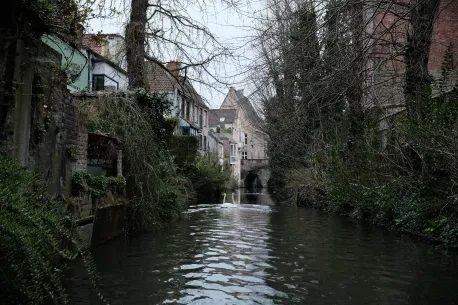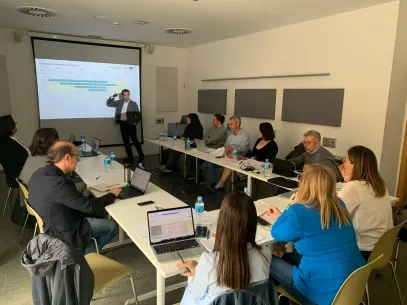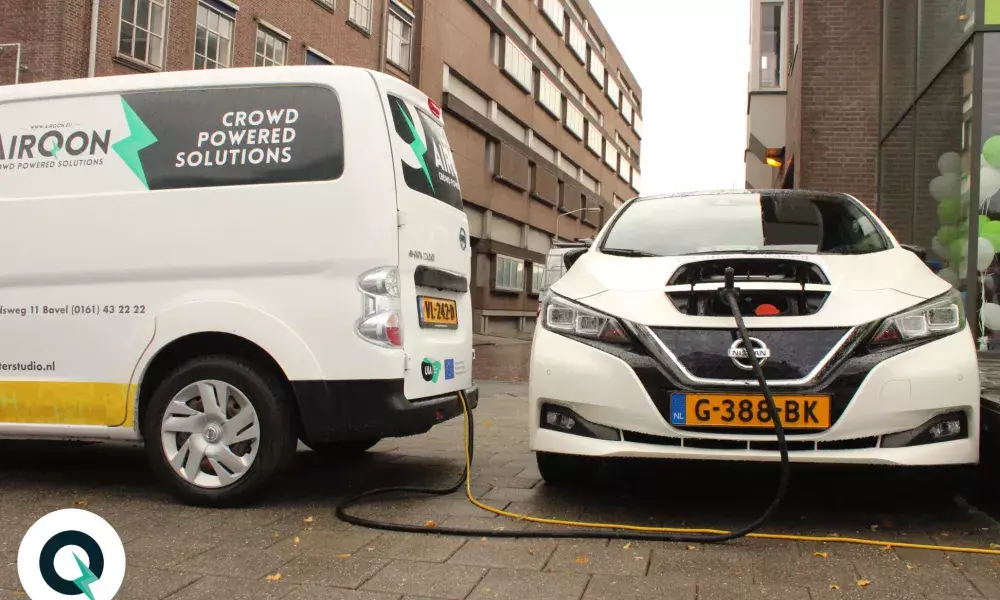
AIRQON provides a flexible and adaptable solution for any type of music show, sport event or festival. In short, it is ideal for any temporary event wherever it takes place. AIRQON is able to be integrated with versatility like other power sources of any kind. On the one hand, it can coexist with on-grid power systems when the electricity network is available and a lot of power is demanded. On the other hand, it complements existing options for off-grid systems in isolated environments, as conventionally diesel generators are used, but also, luckily, other greener solutions such as renewable solar photovoltaic generator, even often complemented by battery storage systems.
The latest technological innovations make cloud systems a reality today. We find it in shared information systems, data base applications, accessibility features for communication devices… Energy management is not exempt from this evolution, since every day it is possible to find out more modular, scalable solutions, adaptable to the needs of each situation, as it is the case of many battery storage solutions. This philosophy can lead us to cloud power source models, where AIRQON, due to its technical characteristics, can be integrated perfectly.

AIRQON charger has been developed by SBPF and it is integrated with the control software developed by iHomer. All the operational information of AIRQON solution is gathered and handled by Faraday Keys to result in a data platform. This platform will display a dashboard with the Key Performance Indicators, and will group all the information of the scheduled events. This will enable interesting features such as planning energy needs of each event and coordinating them with the availability of interested participants and their electric cars.
The standard AIRQON configuration is formed, first of all, by a SBPF charger with a nominal power of 4 kW. This charger is bidirectional, and has to be connected to the car by means of a CHAdeMO connector to have it charged or discharged. At the same time, the charger is equipped with two schuko sockets that let plug any consumption directly to be powered by AIRQON. Ready to be used!
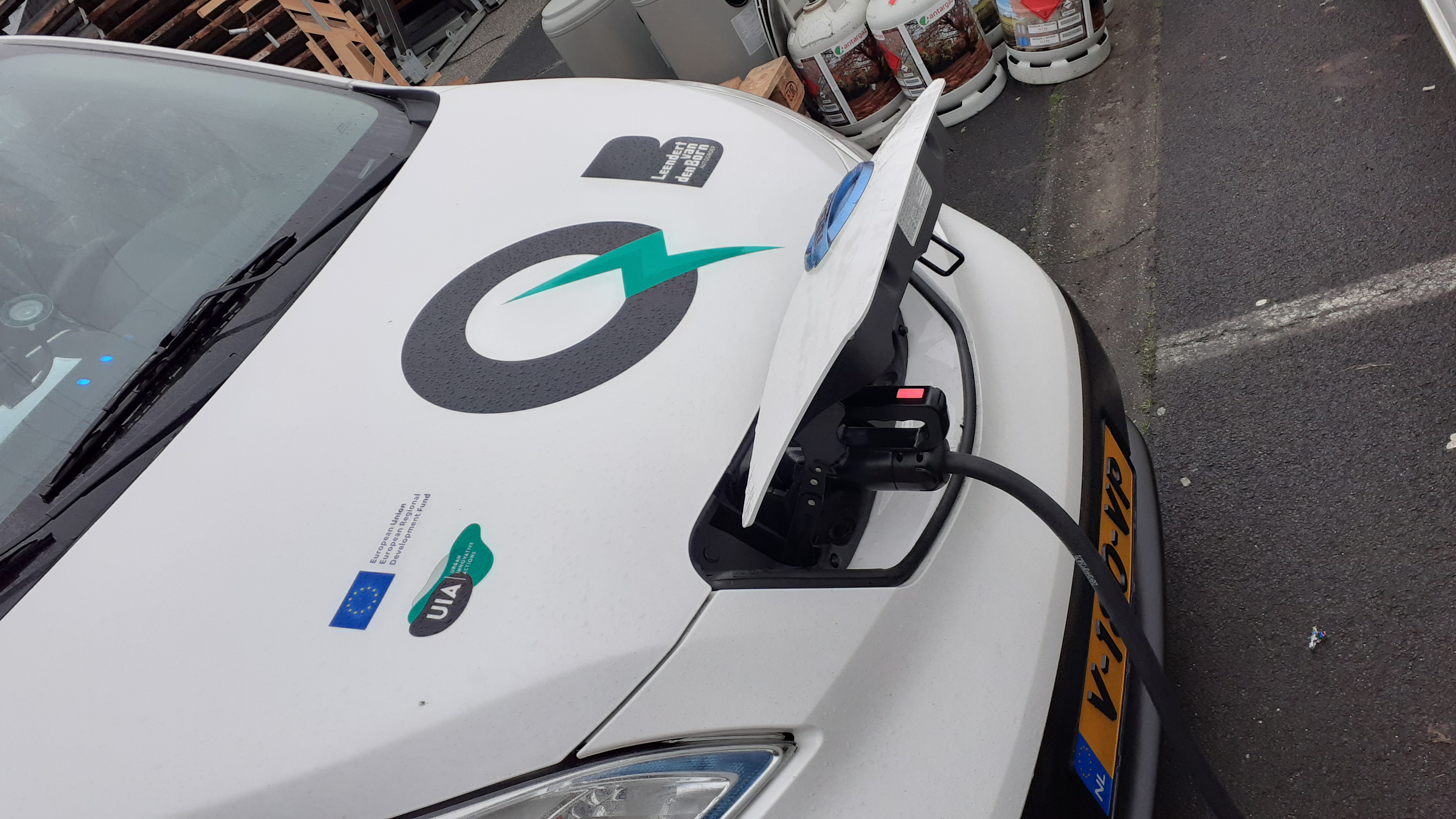

But wait… is that all? Of course not! AIRQON has a lot more! Firstly, a portable control case has been jointly developed between SBPF and iHomer. It runs a control application based on OCPP, the acronym of Open Charge Point Protocol, a specific protocol for communication between electric vehicles charging stations and central management systems, in a similar way to cell phones and mobile networks. The equipment is designed so that the event organizers can control the use of AIRQON and the consumption to be powered. By using a contactless ID card, the sockets can be activated or deactivated by the event organizer, avoiding the possibility of uncontrolled manipulation and improving safety against electrical risks.
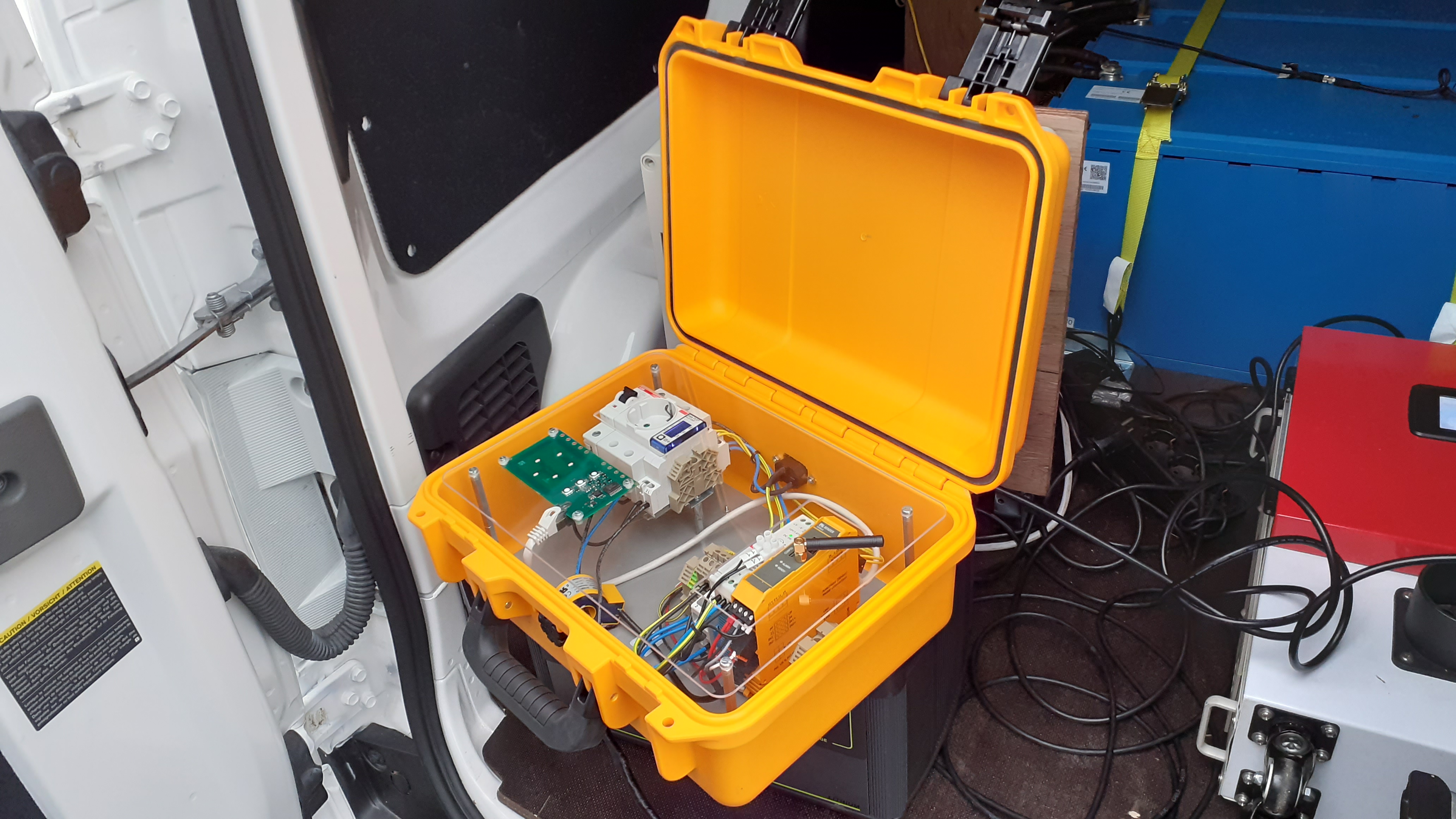

Secondly, a main storage system in batteries, resulting in a total nominal capacity of 20 kWh, has been developed and integrated in the AIRQON solution. In this way, the SBPF charger is complemented, so it is possible simultaneously to consume from the main battery and charge it with the contribution of the electric cars.
Therefore, with the help of the main battery it is possible to decouple energy demand of the event and energy provision from the electric cars connected. The nominal output power of the overall system is 15 kW, able to reach 30 kW for short periods of time. In practice, the decoupled operation can last as long as 8 hours. In other words, all that time the system can be working without a car connected. So far, the system works totally in off-grid mode, like an island.
In addition to this, AIRQON also uses a bidirectional 10 kW Nissan charger which operates connected to the electrical distribution network. It does not have any connected storage system, as AIRQON does, so it works only when an electric car is plugged. Then, for a typical event, a system of two AIRQON off-grid chargers and a NISSAN charger connected to the network may be implemented, all of them operating simultaneously.
Leendert van der Born is the Nissan dealer that takes part in AIRQON. Thanks to them, the AIRQON standard configuration is set up by 2 vans Nissan eNV200. One of them, equipped with a 24 kWh battery, has the charger system embarked as well as the main batteries of the AIRQON solution. The second van is a 40 kWh eNV200, but they also provide other vehicles such as a 62 kWh Nissan Leaf or a 40 kWh Nissan Leaf for test works in the project.
When a car able to be discharged is connected, and there is an energy demand from the consumption side, all the power needed flows through the system. This means that it comes out of the car battery, it passes through the main battery, keeps its voltage level stable, and finally reaches the consumption side. The AIRQON solution acts as a reliable voltage source despite of being off-grid.
AIRQON supports the organization of events, but also has promising synergies with other innovation projects. An interesting case is the Greenhopper project. The main objective is the design and implementation of a smart home demonstrator, equipped with solar photovoltaic generation, home automation systems for monitoring and controlling energy consumption and generation, and with a careful energy-efficient design. In this smart home demo, AIRQON is used as a vehicle to home (V2H) bidirectional charger indistinctly providing power supply and energy storage to complement the rooftop renewable generation.

Greenhopper video:
What could we achieve with this? We would have a network of self-sufficient smart homes, that may be even interconnected among them to share a local energy network. Especially in the case of isolated areas, group members could coordinate themselves in order to charge the electric cars when renewable energy is available, or to help in balancing the network, etc. Furthermore, connected cars can behave as a massive, decentralized storage.
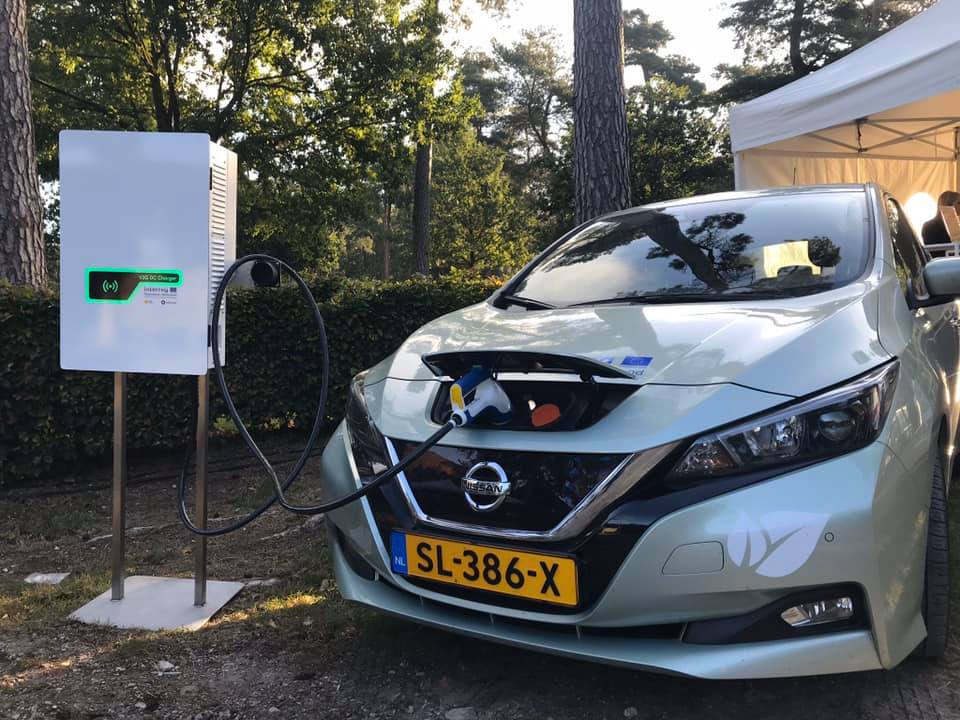
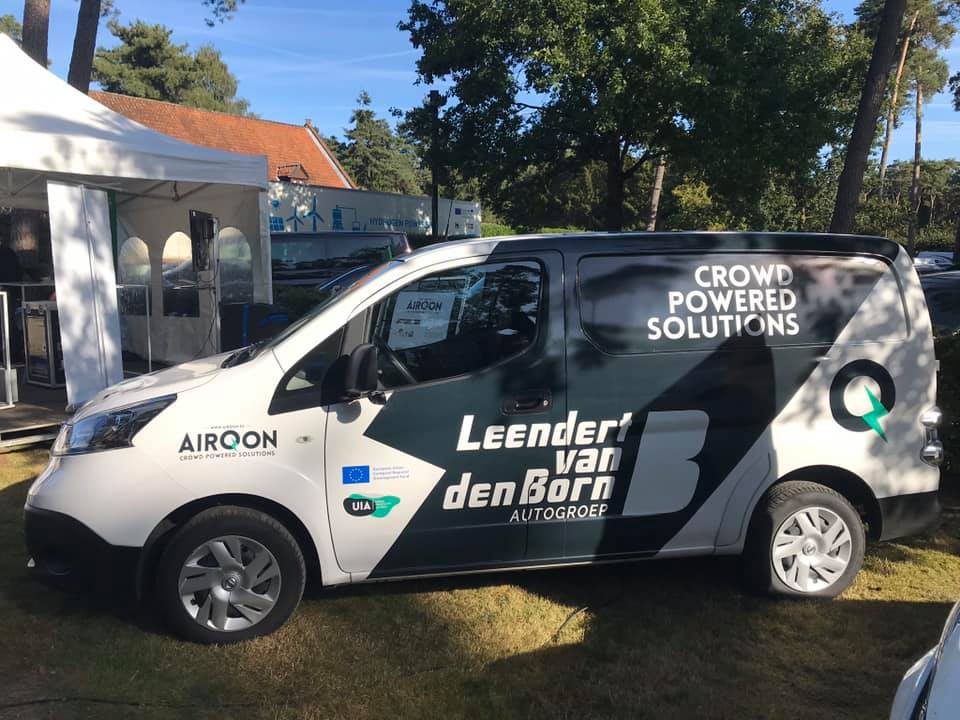
Another interesting initiative, where AIRQON collaborates, is DeeldeZon project, where 160 electric cars are used as on-grid battery storage systems to support the solar photovoltaic generation. It must be noted that a residential standard car usually spends around 16 hours parked on average every day. Besides, the total capacity of the batteries would be able to cope with daily mobility requirements plus the average energy demand of a neighborhood. This project aims to demonstrate that participating in energy trading under those conditions is technical and economically feasible, thanks to the participation of partners specialized in energy management.
The so-called vehicle to grid technology, V2G, is not yet fully consolidated on a commercial scale. We are putting these first experiences into practice with promising results. Obviously, it is likely to be scaled up and be widely extended in the coming years.
About this resource
The Urban Innovative Actions (UIA) is a European Union initiative that provided funding to urban areas across Europe to test new and unproven solutions to urban challenges. The initiative had a total ERDF budget of €372 million for 2014-2020.
Similar content
